Iranian President Hassan Rouhani declared Tuesday that the so-called caliphate of the terrorist group ISIL, also known as IS, ISIS, and Daesh, has ended.
“Today with God’s guidance and the resistance of people in the region we can say that this evil has either been lifted from the head of the people or has been reduced,” Rouhani said, addressing the people of Iran, live on state TV.
“Of course the remnants will continue but the foundation and roots have been destroyed,” he added.
Commander of the Islamic Revolution Guards Corps’ Quds Force, Major General Qassem Soleimani, has also congratulated ISIS’ defeat in Iraq and Syria in a letter to Iran’s Supreme Leader Ayatollah Seyyed Ali Khamenei, according to the Guards’ official news website, Sepah News.
Major Commander Soleimani’s pictures commanding the Quds Force at the frontlines of battles against ISIL fighters in Iran and Syria have often been seen on Iranian media outlets. The Quds Force is a branch of the Revolutionary Guards that is responsible for operations outside Iran’s soil.
Iranian Revolutionary Guard Corps, aside from being a dominant military force, is also an economically capable organization, making it worth billions of dollars. The vast amount of revenue has played a key role in the Guards’ fight in support of Syria’s legitimate government and its president, Bashar al-Assad, against the US/Saudi-backed rebels and also the central government of Iraq in Baghdad.
The Islamic Republic of Iran, having been initially patient in the war against ISIL, sent its key top official, Major Commander Soleimani, to Iraq and Syria to offer Iran’s assistance and discuss the significant role that the country could play in the fight against the terrorist group, ISIL. After having received the legal and official request for military assistance from Baghdad and Damascus, Iran began its campaign against Daesh.
Having in mind that Iran and Syria are close strategic allies, the Guards provided significant support for the Syrian Government in both the Syrian Civil War and the country’s fight against ISIL. The Guards assisted Assad’s government in logistical, technical and financial support, as well as training of National Defence Forces (NDF) and some military troops.
After the Syrian Civil War broke out in 2011, the United States, by sending weapons, and Saudi Arabia, financially, supported the rebels, in an attempt to export their warmongering agenda and taking the war into yet another country in the Middle East.
In 2013, Iran and Hezbollah, a Tehran-backed sociopolitical and paramilitary group in Lebanon, provided important battlefield support for Assad, allowing it to make advances on the opposition and especially ISIL. Iran was thought to have sent nearly 10,000 operatives to Syria.
Apart from the military aid, Iran had invested considerable figures in Syria, helping to maintain a war-torn country. According to various researchers, for instance, the investigations of the director of the Fares Center for Eastern Mediterranean Studies at Tufts University, Nadim Shehadi, Tehran sends nearly $15 billion annually in support of the Syrian government to fight ISIL and the rebels, who are actually the proxy for the US and the Saudi regime.
In 2012, when the United States, which is “addicted to sanctions,” proposed a draft in the United Nations and put Syria in its long list of sanctions, Iran yet again rushed to save the country. It sent the Syrian government over $9 billion to help it withstand Western sanctions. It has also shipped fuel to the country and sent two warships to a Syrian port in a display of power and support.
Commander Qasem Soleimani, the head of the Quds force, claimed in 2014 that in the fight against ISIL “top Quds force commanders were tasked with advising and training Assad’s military and his commanders”, adding that “Revolutionary Guards directed the fighting on the instructions of the Quds Force commanders”. In addition, there are thousands of Iranian paramilitary Basij volunteer fighters as well as Shia from Iraq.
In April 2014, Hossein Amir-Abdollahian, the Iranian deputy foreign minister, said: “We aren’t seeking to have Bashar Assad remain president for life. But we do not subscribe to the idea of using extremist forces and terrorists to topple Assad and the Syrian government.”
According to The Wall Street Journal’s report on 2 October 2015, Iran’s Revolutionary Guard Corps (the IRGC) has had some 7,000 IRGC members and Iranian paramilitary volunteers operating in Iran and was planning to expand its presence in Syria. The Journal also reported that some experts estimated 20,000 Shia foreign fighters were on the ground, backed by Iran.
In July 2015, Iran took the first step in devising Russia–Syria–Iran–Iraq coalition, also known as the 4+1 coalition, when Senior Commander Qasem Soleimani, who is the mastermind of Iran’s fight with Daesh, visited Moscow.
During the early days of the coalition’s starting point, Army of the Guardians of the Islamic Revolution was backed by the Syrian Armed Forces, Russian Air Force, and allied militias. Feeling threatened, the United States, along with its NATO and Arab allies, criticized the coalition, accusing it of numerous things by making up false reports.
On 1 October 2015, Reuters reported that hundreds of Iranian troops arrived in Syria over the previous 10 days and would soon join Syrian government forces and their Lebanese Hezbollah allies in a major ground offensive backed by Russian airstrikes and that Iran has also been training Iraqi Shia militias who are fighting ISIS.
Although Iran was saving the Syrian government from the rebels and the growing threat of ISIL, the country did not lose sight or strength as it was also operating in Iraq. The mastermind of the whole war against ISIL, General Soleimani went to Iraq in mid-June 2014, to help Baghdad organize against ISIL. Later that month, having accepted Iraq’s request to officially partake in the war against ISIL, Iran started flying drones over Iraq, and by August, according to sources like Reuters, Iranian soldiers were in Iraq fighting ISIL. One war correspondent suggested that Iran “joined the air war” against ISIL on 21 June.
By September, according to Business Insider, Iranian Quds Force personnel were deployed to Samarra, Baghdad, Karbala, and the abandoned US military post formerly known as Camp Speicher. At the end of November 2014, an Israeli website claimed to have seen Iranian F-4 Phantom II jet-fighters bombing ISIL strongholds in eastern Iraq; a claim the US army verified.
In March and May 2015, American commentators indicated Qasem Soleimani was “leading Iraq’s military strategy against ISIS.”
The war in Syria brought about thousands of deaths. However, it is not all of them were soldiers. Syrian civilians were brutally killed by the thousands while sitting in their homes.
The US-led coalition had and has been bombing Syrian cities and neighborhoods on a daily basis. The air strikes that are supposedly meant for the terrorists have the highest potential to harm and most recurrently kill civilians.
The website Airwars which “maintains an extensive database of all known allegations in which civilians and friendly forces have been reported killed by the Coalition since August 8th 2014 to October 31st 2017.
“To October 31st, 2017 an overall total of between 16,592 and 24,640 civilian non-combatant fatalities had been locally alleged from 2,341 separate reported Coalition incidents, in both Iraq and Syria.”
Russia–Syria–Iran–Iraq coalition, however, has a considerably lower amount of fatalities. It must be noted that nearly all of the civilian casualties caused by the 4+1 coalition, is mostly resulted from Russian airstrikes.
“Our researchers have so far identified a total of 1,904 claimed civilian casualty events in Syria allegedly involving Russian aircraft, between September 30th, 2015 and February 27th, 2017. The total claimed range for these alleged events is 8,324 to 11,282 non-combatants reported killed.”
The Pentagon, however, claimed, much to human rights groups’ astonishment, that its air war against ISIL is one of the most accurate in history and that it is so careful in who it targets that the 14,000 US airstrikes in Iraq have killed just 89 civilians.
It turns out that the military’s assertion is a stunning underestimation of the true human cost of Washington’s three-year-old war against ISIL. An 18-month-long investigation by the New York Times has found that the US-led military coalition is killing civilians in Iraq at a rate 31 times higher than it’s admitting.
“It is at such a distance from official claims that, in terms of civilian deaths, this may be the least transparent war in recent American history,” Azmat Khan and Anand Gopal report.
The US-led coalition claims that one civilian has been killed in every 157 airstrikes. But Khan and Gopal report that, actually, the rate is one civilian death for every five airstrikes — a rate 31 times as high as what the military claims.
On October 28, at a conference on terrorism in Baghdad, military and militia leaders said that it was Iran that helped their country against terrorism and not the United States or the international coalition.
Hadi al-Amiri, head of the Badr militia and a distinguished Shia figure who was one of the speakers said, “Iran is the one that helped on the ground in Iraq and not the international coalition, during the war against ISIS.”
Al-Amiri spoke for the other militia leaders who in recent days have condemned and denounced the US calls for the disbanding of the Hashd al-Shaabi, also known as Popular Mobilization Forces (PMF), and defended the legitimacy of the government-sanctioned paramilitary, saying they are legitimate Iraqi forces.
He also blamed the world, mainly Washington and former US President Barack Obama, for announcing that he would not join the war against ISIL “because it [ISIL] was a legitimate Sunni uprising against oppressions carried out against them.”
Major General Soleimani, in his letter to Iran’s Supreme Leader, noted the “decisive role” played by Hezbollah and the group’s leader Seyyed Hassan Nasrollah and highlighted the thousands of Iraqi Shia volunteers, known as the Popular Mobilization Forces [Hashd al-Shaabi], who have fought ISIL in Iraq.
He also acknowledged the multinational force that Iran has helped organize in the fight against ISIL and thanked the “thousands of martyrs and wounded Iranian, Iraqi, Syrian, Afghan and Pakistani defenders of the shrine.”
On websites linked to the Guards, members of the organization killed in Syria and Iraq are praised as protectors of Shia holy sites and labeled “defenders of the shrine.”
The Revolutionary Guards Corps has been keeping quiet about their military role in both Syria and Iraq but as the end of ISIL came to a close, the significant role of the organization has manifested itself in both the shaping history of the war against ISIL and the extent of gratitude that the Syrian and Iraqi officials and people have shown.
Retrieved from http://www.libertyfrontpress.com/iran-the-silent-savior-of-iraq-and-syria-from-isis/ on November 24, 2017.


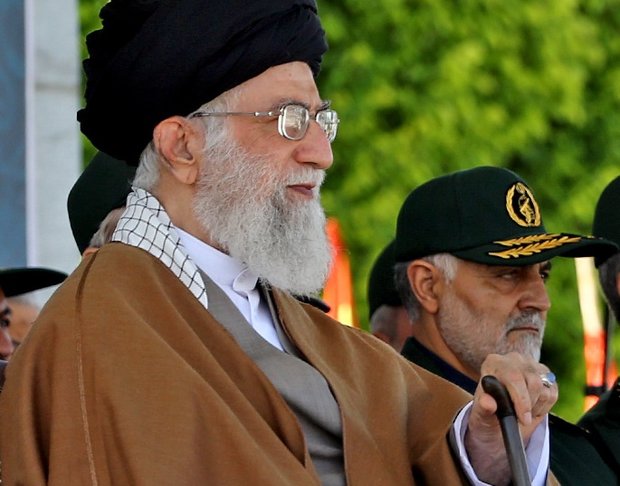






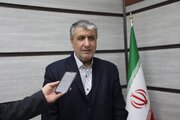


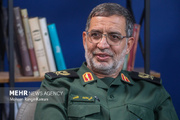
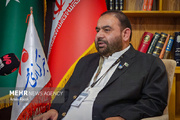

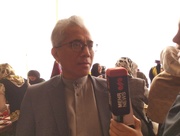
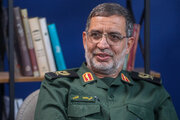


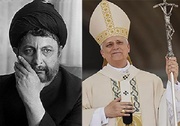

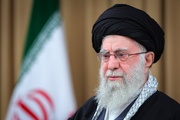


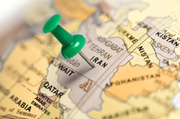
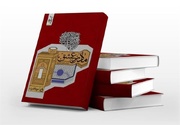
Your Comment